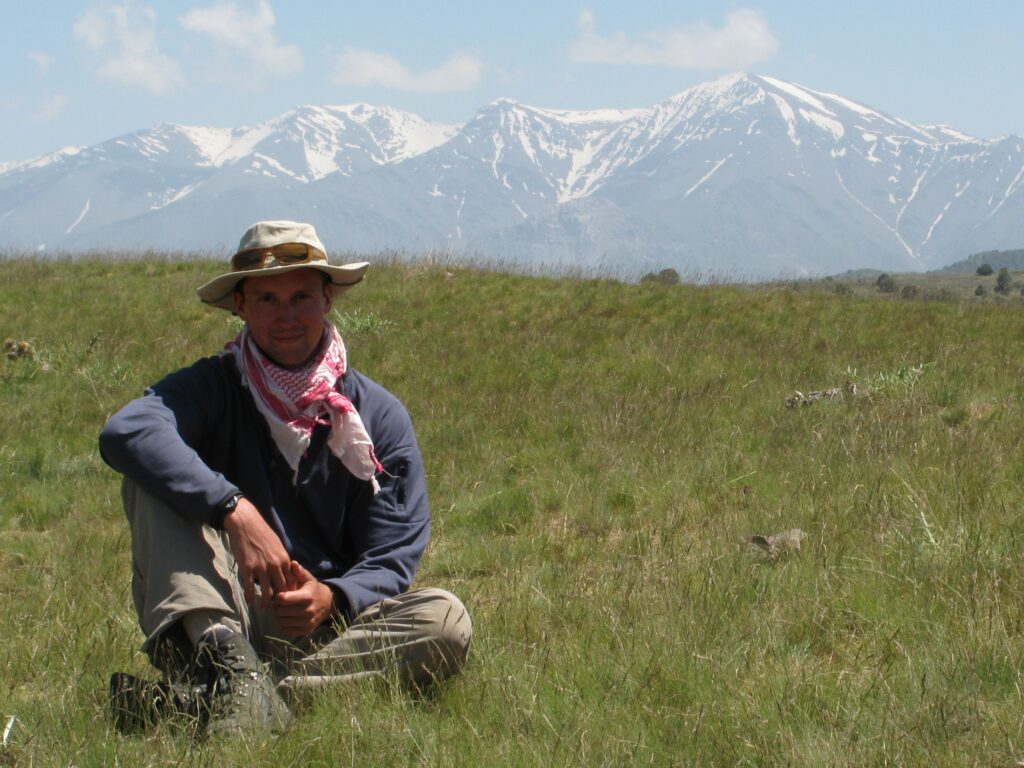
I am a postdoctoral researcher supported by the ERC-funded Project DAIRYCULTURES at the Max Planck Institute for Evolutionary Anthropology (MPI-EVA). I received my Ph.D. from the Faculty of Mathematics and Natural Sciences at Kiel University in 2019, after earning my master’s degree in anthropology at the University of Arizona.
My PhD research focused in part on resolving livestock management strategies through multi-isotope analysis (δ13C, δ15N, and δ18O) of faunal teeth and bones, which respectively provide seasonal and lifetime records of dietary intake and environmental inputs. This work has been important for understanding the earliest spread of millet—a C4 crop with a distinct carbon isotopic composition—to the Eurasian steppes from its center of domestication in northern China.
Now, I focus my research on the initial spread of pastoralism to the Eurasian steppes from the Near East and Europe during the Eneolithic/Early Bronze Age (~3600-2300 BC) through paleogenomics of domesticated sheep, goat, and cattle, in addition to their wild counterparts. This work employing Next-Generation Sequencing of whole genomes is the core of my postdoctoral research at MPI-EVA, which greatly expands on pilot studies focusing on mitochondrial DNA published here:
- Hermes, T. R. et al. (2020) Mitochondrial DNA of domesticated sheep confirms pastoralist component of Afanasievo subsistence economy in the Altai Mountains (3300-2900 cal BC). Archaeological Research in Asia 24, 100232. doi:10.1016/j.ara.2020.100232
- Hermes, T. R. et al. (2020) High mitochondrial diversity of domesticated goats persisted among Bronze and Iron Age pastoralists in the Inner Asian Mountain Corridor. PLOS ONE 15, e0233333. doi:10.1371/journal.pone.0233333
I recently launched the “Rise of the Altai Mountain Pastoralism Project (RAMPP)“, combining archaeological fieldwork and paleogenomics of pastoralist livestock to investigate the emergence of the Afanasievo Culture in the Altai Mountains. RAMPP is jointly funded by the National Geographic Society and the Wenner-Gren Foundation, which support the excavation of the Afanasievo settlement Nizhnyaya Sooru, in partnership with Prof. Alexey Tishkin (Altai State University in Barnaul, Russia). This site represents one of the best preserved settlements of the earliest herders in the Altai region, and likely includes preceding occupations of hunter-gatherers. The main archaeological goals are to investigate the cultural dynamics between indigenous hunter-gatherer communities and herders who migrated from the western steppes. RAMPP’s paleogenomic research is closely tied to my research on the DAIRYCULTURES project.
I am also co-director of the Dzhungar Mountain Archaeology Project (DMAP) along with Michael Frachetti (Washington University in St. Louis) and Paula Dupuy (Nazarbayev University). DMAP is an interdisciplinary field project running since 2005 that investigates the emergence of the earliest herding and farming societies in Inner Asia, in addition to examining the formation and spread of interregional cultural phenomena and also linkages between ecological and political strategies in harsh environments. You can read more about DMAP from these selected publications:
- Hermes, T.R., et al. (2019) Early integration of pastoralism and millet cultivation in Bronze Age Eurasia. Proceedings of the Royal Society B, 286, 20191273. doi:10.1098/rspb.2019.1273
- Doumani, P.N., et al. (2015) Burial ritual, agriculture, and craft production among Bronze Age pastoralists at Tasbas (Kazakhstan). Archaeological Research in Asia, 1–2, 17–32. doi:10.1016/j.ara.2015.01.001
- Doumani, P.N., & Frachetti, M. (2012) Bronze Age textile evidence in ceramic impressions: Weaving and pottery technology among mobile pastoralists of central Eurasia. Antiquity, 86(332), 368–382. doi:10.1017/S0003598X00062827
- Frachetti, M.D., & Mar’yashev, A.N. (2007) Long-Term Occupation and Seasonal Settlement of Eastern Eurasian Pastoralists at Begash, Kazakhstan. Journal of Field Archaeology, 32, 221–242. doi:10.1179/009346907791071520